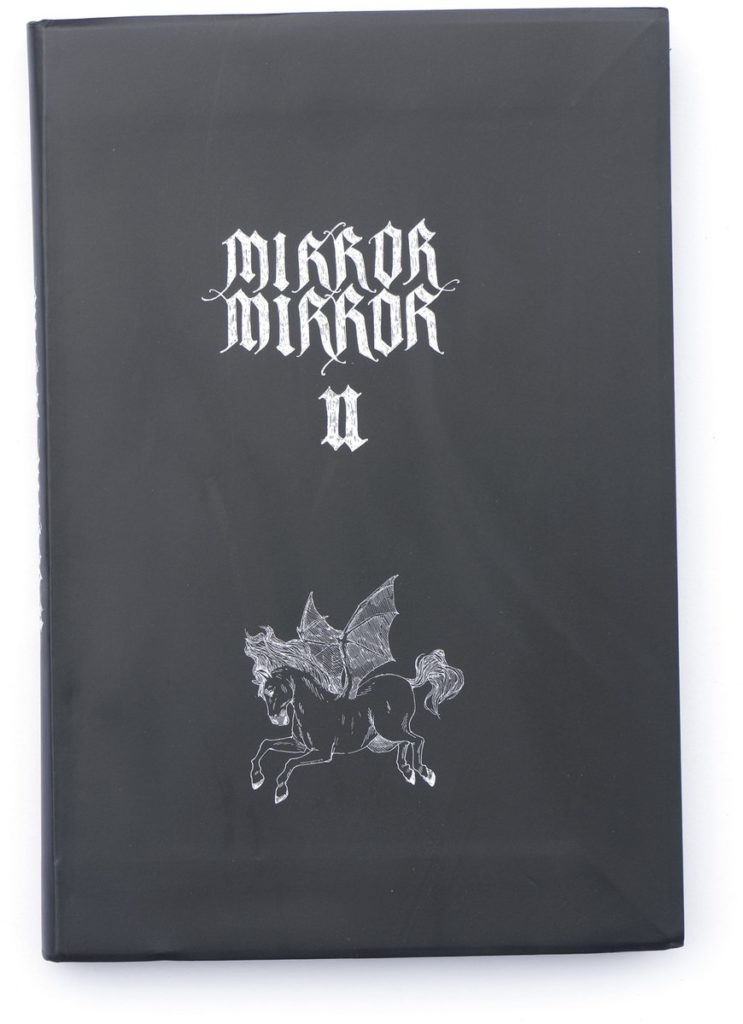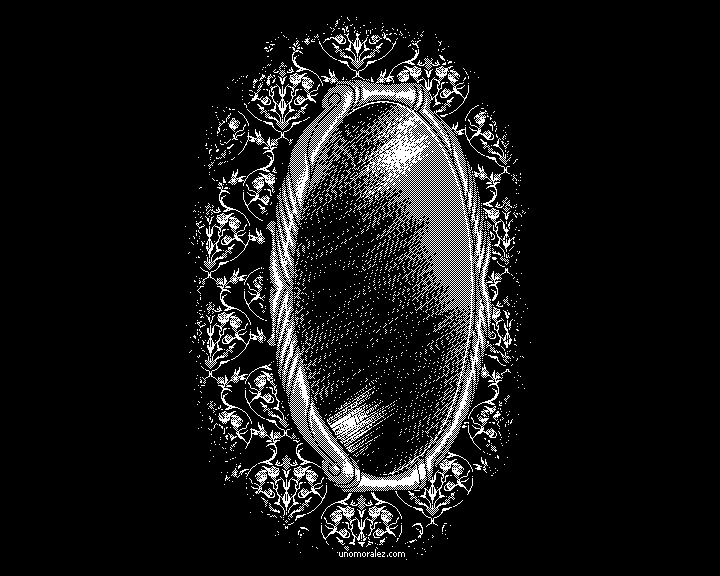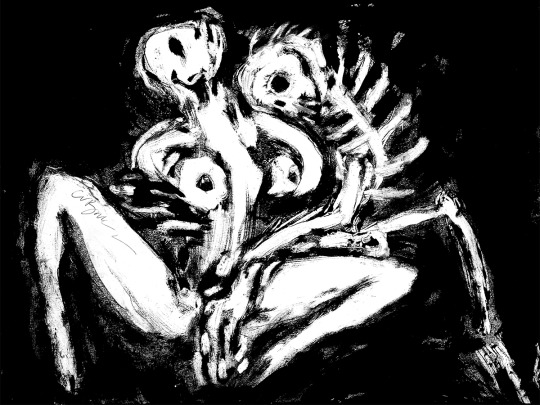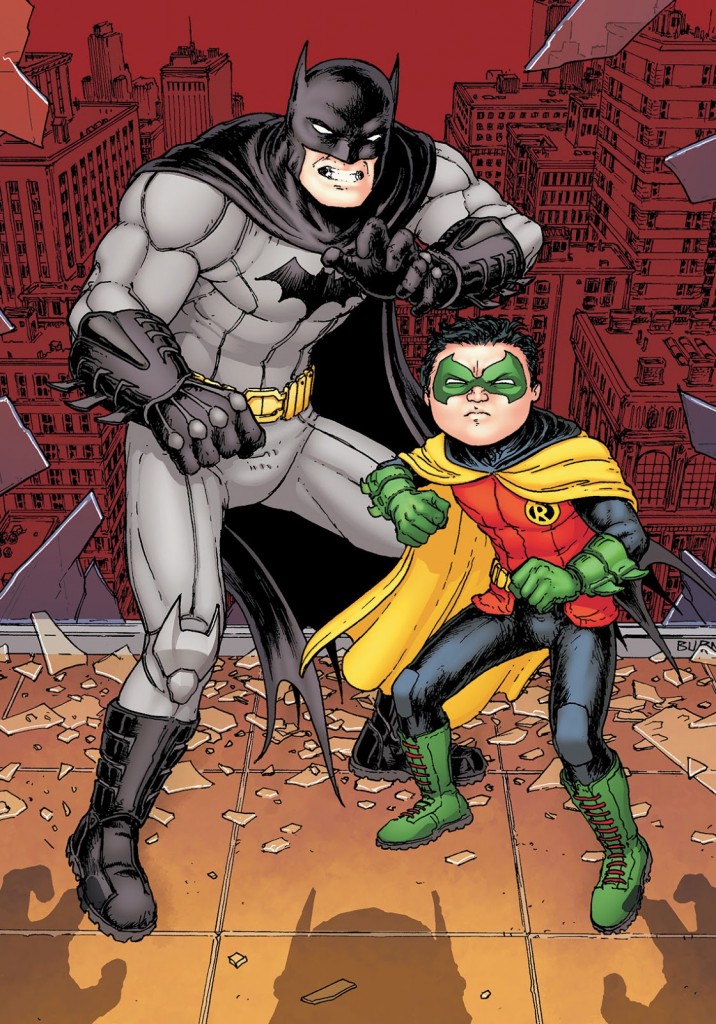Posts Tagged ‘Uno Moralez’
Mirror Mirror II
July 21, 2017
Our anthology Mirror Mirror II, edited by Julia Gfrörer and myself, is now officially for sale from our publisher, 2dcloud, and from our own webstore. Click here to order and see an extensive preview, or click here to buy it from Julia directly.
Contributors include Lala Albert, Clive Barker, Heather Benjamin, Apolo Cacho, Sean Christensen, Nicole Claveloux, Sean T. Collins, Al Columbia, Dame Darcy, Gretchen Alice Felker-Martin, Noel Freibert, Renee French, Meaghan Garvey, Julia Gfrörer, Simon Hanselmann, Aidan Koch, Laura Lannes, Céline Loup, Uno Moralez, Mou, Jonny Negron, Claude Paradin, Chloe Piene, Josh Simmons, Carol Swain, and Trungles.
Our contributors come from Australia, Brazil, England, France, Mexico, Russia, Wales, and the United States. The youngest is 24. The oldest is 77. The majority are women. They are trans and cis, straight and queer. They make comics, zines, fine art, music, film, literature, and journalism. For our book they made work basted around horror, pornography, the gothic, and the abject. They made dark, vulnerable work that reflects the dark, vulnerable world, in hopes that confronting it moves us toward empathy.
Here’s what people are saying about it:
One of the 10 Best Comics of 2017 – The Verge
One of the Best Comics of 2017 – The A.V. Club
One of the Best Comics of 2017 – The Beat
Starred Review – Publishers Weekly
Honorable Mention – The 2017 Publishers Weekly Graphic Novel Critics Poll
“This anthology earns that most potent of horror descriptors: it is truly, deeply unsettling.” —Publishers Weekly (starred review)
“This collection doesn’t just feel haunting; it feels corrosive.” —Juliet Kahn, The Verge, “The 10 Best Comics of 2017”
“Mirror Mirror II is troubling and challenging, but it is also rewarding and stunning—a thrilling experience that readers won’t soon forget.” —Shea Hennum, The A.V. Club, “The A.V. Club’s Favorite Comics of 2017 So Far”
“In a year that many have found bleak and depressing, Mirror Mirror II managed to channel this energy into one of the most riveting visual experiences of the year….the best horror comics anthology available.” —Phillippe Leblanc, “The Beat’s Best Comics of 2017”
“This book should win all the design awards for 2017. It’s as magnificent as the contents are (purposely) horrific.” —Heidi MacDonald, “The Beat’s Best Comics of 2017”
“It awakens the long-underused [horror] genre and pushes your fear buttons in ways you could never have anticipated. It’s hard to pick the most memorably mind-devouring portion.” —Abraham Riesman, Vulture, “8 Comics You Need to Read This June”
“Each comic or illustration feels like a peek into the mercurial depths of the individual artists, never just sex and horror for provocation’s sake. That honesty can be revealing for readers as well — when was the last time a horror/sex anthology taught you something about yourself?” —Jordan Darville, The Fader
“A sexy, creepy book which is daring in the topics it addresses…It does not shy away from how complex and difficult its subject matter is. It’s also a sumptuously designed, beautifully illustrated compendium of some of the most talented alternative comic creators working today.” —Tom Baker, Broken Frontier
“The book is an eclectic mix, beautiful and unsettling, with a strong erotic element….Mirror Mirror II is an immensely strong book, full of varied, challenging work that will not disappoint fans of the featured genres. If you come across a copy, I highly recommend picking it up.” —Pete Redrup, The Quietus
“Reading this is like dreaming — though whether you’re immersed in a nightmare or a wet dream is unclear….This book is like a porn stash you’d find in the cupboard of a medieval demon.” —Dan Schindel, Hyperallergic
“Mirror Mirror II is at once a frivolous memento mori and an outright challenge to your own personal space.” —Austin Lanari, Comics Bulletin
“At a time when real, human-rights-violating terrors abound, and the collective stomach is weak…Gfrörer and Collins see the genre as a processing mechanism to sort out repressed anxieties, echoing critics such as Robin Wood who has argued that the ‘horror genre is a struggle for recognition of all that our civilization represses or oppresses.'”—Minh Nguyen, AQNB
“I’m not going to lie, this one really messed with me. If I were listing comics that challenged me the most in 2017…this would have been number one with a bullet….Collins and Gfrörer push to the very edge without going over it, with stories that show the strong link between eroticism and horror. It’s really unlike anything I’ve ever read.” —Rob McGonigal, Panel Patter
“High quality smut.” —Will Menaker, Chapo Trap House
“Kind of feeling [it]” —Kevin Huizenga (Ganges), “Notable Comics Read in 2017”
“Early contender for best graphic novel of 2017.” —Philippe LeBlanc, The Beat
“This is a book that provokes, that pushes and pulls, that strips down to the bone and re-clothes in different flesh any notions you might have about horror, pornography, and abjection. It’s wonderful….I haven’t had a book challenge me this much in a long time.” —Sarah Miller, Sequentialist
“A thought-provoking, richly entertaining collection from some of the most exciting comic artists working today. A must read for fans of the horrific and perverse.” —Bryan Cogman, Game of Thrones
“An impressive collection of beautiful depictions of grotesque things and grotesque depictions of beautiful things.” —Alan Resnick, Unedited Footage of a Bear / This House Has People in It
“Editors Sean T. Collins and Julia Gfrörer have assembled an exquisitely creepy and seductive new collection of comics with Mirror Mirror II. From Uno Moralez’s pixelated noirs to Dame Darcy’s ornate Gothic ghost stories, the wide range of horror here is fantastic, as characters creep and fuck in the shadows of unimaginable darkness throughout. It’s certainly the perfect, freaky anthology for you, your lover, and all the demons in your mind.” —Hazel Cills, MTV News / Jezebel
“Mirror Mirror II invites the most innovative creators working in the form today and proves just how expansive the pornographic and gothic can be, encapsulating the pop cultural, fantastical, and realistic in one fell swoop.” —Rachel Davies, Rookie / The Comics Journal
Mirror Mirror 2
March 11, 2016Mirror Mirror 2
an anthology
featuring new comics and drawings by
Lala Albert / Clive Barker / Heather Benjamin / Sean Christensen / Nicole Claveloux / Sean T. Collins / Al Columbia / Dame Darcy / Noel Freibert / Renee French / Meaghan Garvey / Julia Gfrörer / Simon Hanselmann / Hellen Jo / Hadrianus Junius / Aidan Koch / Laura Lannes / Céline Loup / Uno Moralez / Mou / Chloe Piene / Josh Simmons / Carol Swain
horror / pornography / the Gothic / the abject
edited by Sean T. Collins & Julia Gfrörer
published by 2dcloud
Q1 2017 | advance copies Fall 2016
“For darkness restores what light cannot repair”
teaser image by Clive Barker
Mirror Mirror 1 | available now for preorder
Elsewhere again
February 28, 2013I’m excited to announce that I’ve made my debut at Wired, writing about recent developments in Grant Morrison & Chris Burnham’s Batman Incorporated #8. I tried to place the event in the context of Morrison’s run, and Morrison’s run in the context of the other things going on both with him and with Batman and DC Comics in recent years. Thanks to Laura Hudson for the opportunity.
And at Vorpalizer, I’ve written about Ron Howard’s Willow and the art and comics of Uno Moralez. Running the gamut!
Re-press
August 22, 2012Art Levy at Prefix and Margaret Eby at the Forward enjoyed Hottest Chick in the Game and said so publicly, for which I am grateful.
Also, Mark Frauenfelder of Boing Boing linked to my interview with Uno Moralez at The Comics Journal. The more people who see Moralez’s work, the better.
Say Hello, Uno Moralez!
August 16, 2012
I interviewed Uno Moralez for The Comics Journal. He’s one of my favorite working cartoonists, and this is his first English-language interview.
The 20 Best Comics of 2011
January 1, 201220. Uncanny X-Force (Rick Remender and Jerome Opeña, Marvel): In a year when the ugliness of the superhero comics business became harder than ever to ignore, it’s fitting that the best superhero comic is about the ugliness of being a superhero. Remender uses the inherent excess of the X-men’s most extreme team to tell a tale of how solving problems through violence in fact solves nothing at all. (It has this in common with most of the best superhero comics of the past decade: Morrison/Quitely/etc. New X-Men, Bendis/Maleev Daredevil, Brubaker/Epting/etc. Captain America, Mignola/Arcudi/Fegredo/Davis Hellboy/BPRD, Kirkman/Walker/Ottley Invincible, Lewis/Leon The Winter Men…) Opeña’s Euro-cosmic art and Dean White’s twilit color palette (the great unifier for fill-in artists on the title) could handle Remender’s apocalyptic continuity mining easily, but it was in silent reflection on the weight of all this death that they were truly uncanny.
19. The League of Extraordinary Gentlemen Vol. 3: Century #2: 1969 (Alan Moore and Kevin O’Neill, Top Shelf/Knockabout): I’ll admit I’m somewhat surprised to be listing this here; I’ve always enjoyed this last surviving outpost of Moore’s comics career but never thought I loved it. But in this installment, Moore and O’Neill’s intrepid heroes — who’ve previously overcome Professor Moriarty, Fu Manchu, and the Martian war machine — finally succumb to their own excesses and jealousies in Swinging London, allowing a sneering occult villain to tear them apart with almost casual ease. It’s nasty, ugly, and sad, and it’s sticking with me like Moore’s best work.
18. The comics of Lisa Hanawalt (various publishers): As I put it when I saw her drawing of some kind of tree-dwelling primate wearing a multicolored hat made of three human skulls stacked on top of one another, Lisa Hanawalt has a strange imagination. And it’s a totally unpredictable one, which is what makes her comics – whether they’re reasonably straightforward movie lampoons or the extravagantly bizarre sex comic she contributed to Michael DeForge and Ryan Sands’s Thickness anthology, as dark and damp as the soil in which its earthworm ingénue must live – a highlight of any given day a new one pops up.
17. Daybreak (Brian Ralph, Drawn and Quarterly): Fort Thunder’s single most accessible offspring also proves to be its bleakest, thanks to an extended collected edition that converts a rollicking first-person zombie/post-apocalypse thriller into a troubling meditation on the power of the gaze. Future artcomics takes on this subgenre have a high bar to clear.
16. Habibi (Craig Thompson, Pantheon): It’s undermined by its central characters, who exist mainly as a hanger on which this violent, erotic, conflicted, curious, complex, endlessly inventive coat of many colors is hung. But as a pure riot of creative energy from an artist unafraid to wrestle with his demons even if the demons end up winning in the end, Habibi lives up to its ambitions as a personal epic. You could dive into its shifting sands and come up with something different every time.
15. Ganges #4 (Kevin Huizenga, Coconino/Fantagraphics): Huizenga wrings a second great book out of his everyman character’s insomnia. It’s quite simple how, really: He makes comics about things you’d never thought comics could be about, by doing things you never thought comics could do to show you them. Best of all, there’s still the sense that his best work is ahead of him, waiting like dawn in the distance.
14. The Congress of the Animals (Jim Woodring, Fantagraphics): The potential for change explored by the hapless Manhog in last year’s Weathercraft is actualized by the meandering mischief-maker Frank this time around. While I didn’t quite connect with Frank’s travails as deeply as I did with Manhog’s, the payoff still feels like a weight has been lifted from Woodring’s strange world, while the route he takes to get there is illustrated so beautifully it’s almost superhuman. It’s the happy ending he’s spent most of his career earning.
13. Mister Wonderful (Daniel Clowes, Pantheon): Speaking of happy endings an altcomix luminary has spent most of his career earning! Clowes’s contribution to the late, largely unlamented Funny Pages section of The New York Times Magazine is briefly expanded and thoroughly improved in this collected edition. Clowes reformats the broadsheet pages into landscape strips, eases off the punchlines and cliffhangers, blows individual images up to heretofore unseen scales, and walks us through a self-sabotaging doofus’s shitty night into a brighter tomorrow.
12. The comics of Gabrielle Bell (various publishers): Bell is mastering the autobiography genre; her deadpan character designs and body language make everything she says so easy to buy – not that that would be a challenge with comics as insightful as her journey into nerd culture’s beating heart, San Diego Diary, just by way of a for instance. But she’s also reinventing the autobiography genre, by sliding seamlessly into fictionalized distortions of it; her black-strewn images give a somber, thoughtful weight to any flight of fancy she throws at us. What a performance, all year long.
11. The Armed Garden and Other Stories (David B., Fantagraphics): Religious fundamentalism is a dreary, oppressive constant in its ability to bend sexuality to mania and hammer lives into weapons devoted to killing. But it has worn a thousand faces in a millennia-long carnevale procession of war and weirdness, and David B. paints portraits of three of its masks with bloody brilliance. Focusing on long-forgotten heresies and treating the most outlandish legends about them as fact, B.’s high-contrast linework sets them all alight with their own incandescent madness.
10. Too Dark to See (Julia Gfrörer, Thuban Press): It was a dark year for comics, at least for the comics that moved me the most. And no one harnessed that darkness to relatable, emotional effect better than Julia Gfrörer. Her very contemporary take on the legend of the succubus was frank and explicit in its treatment of sexuality, rigorously well-observed in its cataloguing of the spirit-sapping modern-day indignities that can feed depression and destroy relationships, and delicately, almost tenderly drawn. It’s like she held her finger to the air, sensed all the things that can make life rotten, and cast them onto the pages. She made something quite beautiful out of all that ugly.
9. The comics and pixel art of Uno Moralez (self-published on the web at unomoralez.com): What if an 8-bit NES cut-scene could kill? The digital artwork of Uno Moralez — some of it standard illustrations, some of it animated gifs, some of it full-fledged comics — shares its aesthetic with The Ring‘s videotape or Al Columbia’s Pim & Francie: a horror so cosmically black, images so unbearably wrong, that they appear to have leaked into and corrupted their very medium of transmission. Moralez fuses crosses the streams of supernatural trash from a variety of cultures — the legends and Soviet art of his native Russia, the horror and porn manga of Japan, the B-movies and horror stories of the States, the formless sensation aesthetic of the Internet itself — into a series of images that is impossible to predict in its weirdness but totally unflagging in its sense that you’d be better off if you’d never laid eyes on it. I can’t wait to see more.
8. The comics of Michael DeForge (various publishers): The last time you saw a cartoonist this good and this unique this young, you were probably reading the UT Austin student newspaper comics section and stumbling across a guy named Chris Ware. All four of DeForge’s best-ever comics — his divorced dad story in Lose #3, his shape-shifting/gender-bending erotica in Thickness #2, his self-published art-world fantasia Open Country, and his gorgeously colored body-horror webcomic Ant Comic — came out this year, none of them looking anything at all like anything you could picture before seeing your first Michael DeForge comic. It’s almost frightening to think where he’ll be five years from now, ten years from now…or even just this time next year.
7. The comics and art of Jonny Negron (various publishers): What if someone took Christina Hendricks’s walk across the parking lot and trip to the bathroom in Drive and made an entire comics career out of them? That is an enormously facile and reductive way to describe the disturbing, stylish, sexy, singular work of Jonny Negron, the breakout cartoonist of the year, but it at least points you in the right direction. No one’s ever thought to combine his muscular yet curiously dispassionate bullet-time approach to action and violence, his Yokoyama-esque spatial geometry, his attention to retrofuturistic fashion and style, his obvious love of the female body in all its shapes and sizes, and his ambient Lynchian terror; even if they had, it’d be tough to conceive of anyone building up his remarkable body of work in such a short period of time. Open up your Tumblr dashboard or crack an anthology (Thickness, Mould Map, Study Group, Smoke Signal, Negron and Jesse Balmer’s own Chameleon), and chances are good that Negron was the weirdest, best, most coldly beautiful thing in it. It’s like a raw, pure transmission from a fascinating brain.
6. The Wolf (Tom Neely, I Will Destroy You): Neely’s wordless, painted, at-times pornographic graphic novel feels like the successful final draft to various other prestigious projects’ false starts. It’s a far less didactic, more genuinely erotic attempt at high-art smut than Dave McKean’s Celluloid; a less self-conscious, more direct attempt at frankly depicting both the destructive and creative effects of sex on a relationship via symbolism than Craig Thompson’s Habibi; a blend of sex and horror and narrative and visual poetry and ugly shit and a happy ending that succeeds in each of these things where many comics choose to focus on only one or two.
5. The Cardboard Valise (Ben Katchor, Pantheon): Prep your time capsules, folks: You’d be hard pressed to find an artifact that better conveys our national predicament than Ben Katchor’s latest comic-strip collection, a series of intertwined vignettes created largely before the Great Recession and our political class’s utter failure to adequately address it, but which nonetheless appears to anticipate it. Its message — that blind nationalism is the prestige of the magic trick used by hucksters to financially and culturally ruin societies for their own profit — is delightfully easy to miss amid Katchor’s remarkable depictions of lost fads, trends, jobs, tourist attractions, and other detritus of the dying American Century. He’s the very most funnest Cassandra around.
4. Love from the Shadows (Gilbert Hernandez, Fantagraphics): I picture Gilbert Hernandez approaching his drawing board these days like Lawrence of Arabia approaching a Turkish convoy: “NO PRISONERS! NO PRISONERS!” In a year suffused with comics funneling pitch-black darkness through a combination of sex and horror, none were blacker, sexier, or more horrific than this gender-bending exploitation flick from Beto’s “Fritz-verse.” None also functioned as a rejection of the work that made its creator famous like this one did, either. Not a crowd-pleaser like his brother, but every bit as brilliant, every bit as fearless.
3. Garden (Yuichi Yokoyama, PictureBox): Like a theme park ride in comics form — with the strange events it chronicles themselves resembling a theme park ride — Yokoyama’s book is a breathtaking, breathless experience. Alongside his anonymous but extravagantly costumed non-characters, we simply go along for the ride, exploring Yokoyama’s prodigious, mysterious imagination as he concocts a seemingly endless stream of increasingly strange interfaces between man and machine, nature and artifice. As a metaphor for our increasingly out-of-control modern life it’s tough to top. As pure thrilling kinetic cartooning it’s equally tough to top.
2. Big Questions (Anders Nilsen, Drawn & Quarterly): Last year, I wrote that if the collected edition of Nilsen’s long-running parable of philosophically minded birds and the plane crash that turns their lives upside-down didn’t top my list whenever it came out, it must have been some kind of miracle year. Turns out that it was. But you’d pretty much have to create a flawless capstone to a thirty-year storyline of neer-peerless intelligence and artistry to top this colossal achievement. Nilsen’s painstaking, pointillist cartooning and ruthless examination of just how little regard the workings of the world have for any given life, human or otherwise, marks him as the best comics artist of his generation, and solidifies Big Questions‘ claim as the finest “funny animal” comic since Maus.
1. Love and Rockets: New Stories #4 (Gilbert and Jaime Hernandez, Fantagraphics): Gilbert got his due elsewhere on my list, so let’s ignore his contribution to this issue, which advance the saga of his bosomy, frequently abused protagonist Fritz Martinez both on and off the sleazy silver screen. Instead, let’s add to the chorus praising Jaime’s “The Love Bunglers” as one of the greatest comics of all time, the point toward which one of the greatest comics series of all time has been hurtling for thirty years. In a single two-page spread Jaime nearly crushes both his lovable, walking-disaster main characters Maggie and Ray with the accumulated weight of all their decades of life, before emerging from beneath it like Spider-Man pushing up from out of that Ditko machinery. You can count the number of cartoonists able to wed style to substance, form to function, this seamlessly on one hand with fingers to spare. A masterpiece.
Comics Time: Various pieces by Uno Moralez
February 9, 2011Various comics and illustrations by Uno Moralez
Uno Moralez, writer/artist
self-published, 2011-
Read them for free at UnoMoralez.com
I’ve been struggling mightily to put my finger on what the art and comics of Uno Moralez remind me of. I got that he draws the faces and figures of his characters to evoke that weird frisson you get when you see commercial illustration from other cultures, where what’s perfectly normal in (say) Eastern Europe or the Indian subcontinent or Southeast Asia or Central America looks just slightly off-kilter and disconcerting to us. And I got that he paces his horror comics with the attention to narrative economy and rhythm of a dark Nick Gurewitch. (That comic about the kid and his telescope gave me panicky giggles with each subsequent reveal.) And I got that there’s a massive, in-your-face dose of kink and smut, tying it to similar traditions in Japanese illustrations and comics and also reinforcing that “I shouldn’t be seeing this” feeling. But that weird, glitchy computer drawing style — what is that all about? Then it hit me: It looks like a black-and-white version of the still images they used as cut scenes in old 8-bit Nintendo games. It feels wrong to apply that aesthetic to these horrific images and stories; and because the style is so mechanical, it’s a wrongness that feels as though it has settled into and infected the very digital medium conveying it — the computer equivalent of Pim and Francie‘s Golden Age animation studio gone horribly wrong. Put it all together and you’ve got one of the most impressive and fully formed horror aesthetics I’ve seen…well, since Michael DeForge, I suppose, coupled with that same “whoa” factor I got from the format and pacing of Emily Carroll’s brilliantly assembled “His Face All Red.” Jeepers creepers, does this person hit my buttons.
(Via Zack Soto via Jillian Tamaki via Ryan Sands)




